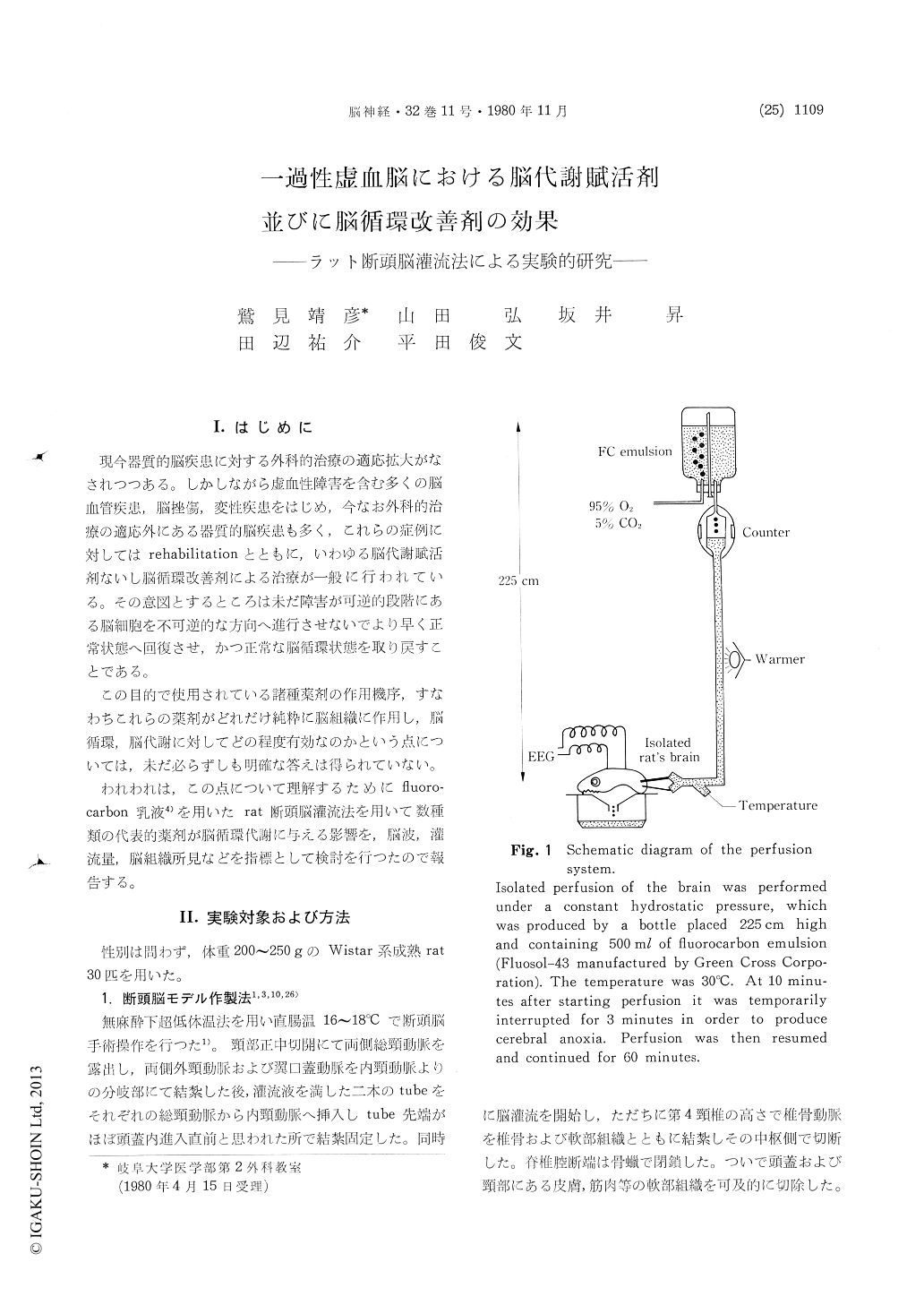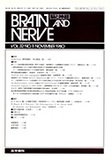Japanese
English
- 有料閲覧
- Abstract 文献概要
- 1ページ目 Look Inside
I.はじめに
現今器質的脳疾患に対する外科的治療の適応拡大がなされつつある。しかしながら虚血性障害を含む多くの脳血管疾患,脳挫傷,変性疾患をはじめ,今なお外科的治療の適応外にある器質的脳疾患も多く,これらの症例に対してはrehabilitationとともに,いわゆる脳代謝賦活剤ないし脳循環改善剤による治療が一般に行われている。その意図とするところは未だ障害が可逆的段階にある脳細胞を不可逆的な方向へ進行させないでより早く正常状態へ回復させ,かつ正常な脳循環状態を取り戻すことである。
この目的で使用されている諸種薬剤の作用機序,すなわちこれらの薬剤がどれだけ純粋に脳組織に作用し,脳循環,脳代謝に対してどの程度有効なのかという点については,未だ必らずしも明確な答えは得られていない。
Experimental studies were performed on effects on cerebral circulation and metabolism of 3 drugs, using an isolated, perfused rat's brain preparation. Perfusion was done with fluorocarbon emulsion. Perfusion pressure was kept constant and perfusion was interrupted temporarily for 3 minutes. Changes in EEG, perfusion rate and histological findings, induced by drug administration, were observed. The results obtained were as follows.
1) Hydrogenated ergot alkaloids: Tendency of spontaneous gradual reduction in EEG activities, as observed in control experiments, was alleviated and tendency of induction of fast activities wasnoted. Perfusion rate increased significantly. These findings suggested that this drug was effec-tive in maintaining normal metabolism of brain cells and in preventing insufficiency of cerebral circulation, under adverse conditions.
2) Hydrocortisone: No significant changes were observed in EEG activities. However a significant increase in perfusion rate was seen at the later stage of perfusion. It was inferred that this drug might alleviate swelling of capillary endothelial cells and astrocytic process and, consequently, dilate cerebral capillaries, resulting in increased circulation of an injured brain.
3) Thyrotropin releasing hormone-tartrate: EEG showed an earlier post-interruption recovery to control EEG after resuming perfusion, and EEG improvement continued for a fairly long period. There was a significant increase in perfusion rate. It was supposed that this drug had, besides its action of a hypothalamic releasing hormone, a central nervous stimulatory action, and the observed increase in perfusion rate might be due to metabolic regulation.

Copyright © 1980, Igaku-Shoin Ltd. All rights reserved.


